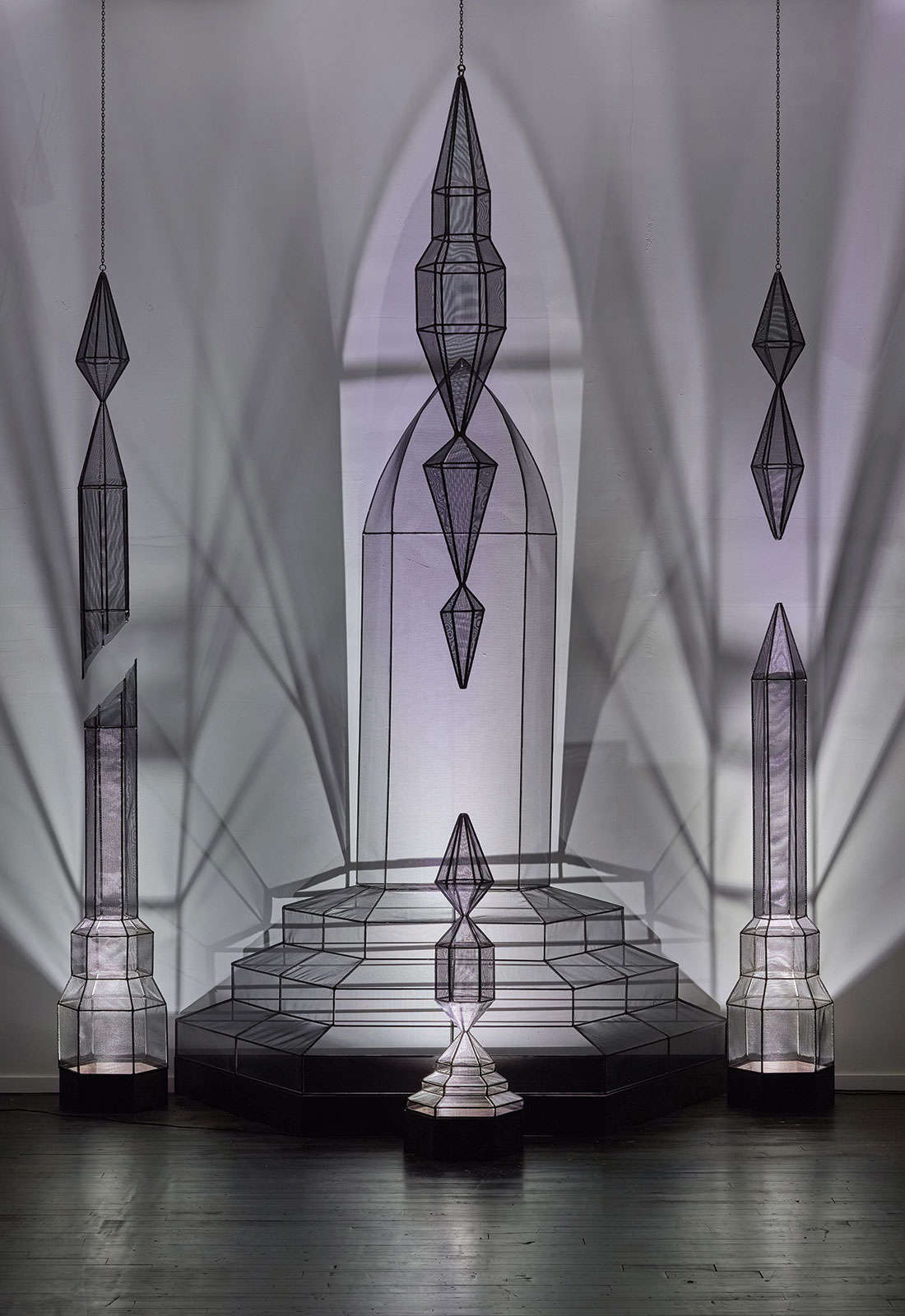When Iranian American artist Afruz Amighi ’97 attended Barnard, she spent her days across Broadway at Columbia’s School of International and Public Affairs (SIPA), fulfilling her requirements for a degree in political science. Her nights, however, were spent making art.
“My dorm at Barnard was a tiny room on a high floor of a beautiful brick building. I don’t even remember the name of the dorm, just that inside of it, I felt like I was in my own little turret,” she recalls. “There were canvases leaning on my bed, and I would even paint there in bed. It was very private; no one knew I was painting. It was my first studio, where I tended to these little seeds in secret.”
Those seeds formed deeper roots, and upon graduating, Amighi went on to complete her MFA at New York University. Since then, she has been exhibited in galleries and museums around the world, including a commission for the 55th Venice Biennale. Her large-scale installations, which integrate and explore light as a primary material, can be found in the collections of the Metropolitan Museum of Art, the Houston Museum of Fine Art, and the Victoria & Albert Museum in London, among others.
Amighi spoke with us about her path to becoming an artist, why architecture matters to her work, and where her imagination is taking her now.
I read that you initially set out to study architecture. What about it interests you?
I participated in an intensive summer architecture program at UC Berkeley before attending Barnard. I was drawn to architecture because I saw it as an art form in which the channeling and manipulation of light was paramount. Gothic arches gather shadows in their folds; stained glass paints floors and walls in color. These light forms move and shift from day to night, inconstant and intangible. For me, architecture was a way of working with the sun, the moon, with candlelight, amplifying it, obstructing it, diffusing it — all on an immersive scale.
However, at the end of my program, my most beloved of professors advised me to leave the field, as my math skills were poor. He suggested I try art instead.
How can a physical space — a gallery versus a historic building — transform a particular work?
The advantage of working in a white-cube gallery space is that of control. You have a blank canvas with set parameters. The lighting can be determined with exactitude, and the environment — often drywall and polished concrete — is lifeless and predictable. These materials will not interfere with your intended effects. To create with this level of precision and control can be exhilarating.
The advantage of working within a historical space is the element of surprise. It is less like a solo exhibit in a gallery, where the installation can be foreseen, and more like a two-person show where you are collaborating with the materials, textures, idiosyncrasies, and history of the space itself. You are contending with its ghosts and trying to introduce your own into the sediment where they will cohabitate. What happens in the end is often unpredictable and sometimes magical. I do think both can be exciting for artist and viewer.
Are there certain materials that play a particularly important role in your work?
Light is the most important material in my work and the most constant. It is also a catalyst. I use it to transform the other materials I use: plastic, metal, chain, mesh, things found on construction sites and city streets. These industrial materials, along with light, constitute my personal landscape, my forest, my palette, my nature. But these materials often go unnoticed, despite the fact that we live amongst them. I use light to try and activate something precious within them. Before they were brutally extracted from the earth, processed, and made unrecognizable to themselves and to us, they were once singular and alive. Part of my work involves reuniting these materials with their past through light.
Can you tell me about your creative process?
It begins when a certain material jumps out at me from my surroundings. One night on my way home from JFK [airport], I noticed a large building in the process of being built. It was wrapped in black mesh and lit with large industrial lightbulbs from within. I ordered dozens of rolls of black construction mesh, which sat unused in my studio for years. But one day something clicked, and I understood how I would use the mesh. This process of noticing a material usually happens because it is activated by light — I’ll hoard a material without an obvious end in mind, just a vague sense of some forms I would like to make. I have just recently figured out what to do with the thousands of Bic Cristal pens I have amassed in my studio since graduate school, the ones that really look like crystals but are filled with blue ink.
How would you describe your work?
Austere nest of solace and disregarded things.
What projects are you working on now?
I will be presenting my first sculpture in glass, entitled Sky Carpet, which will be installed at the Khalil Gibran Academy, visible across the street from BAM [Brooklyn Academy of Music], this summer. In fall 2024, I will have a large-scale installation entitled those whom no one owns suspended in the lobby of the Asian Art Museum in San Francisco.




